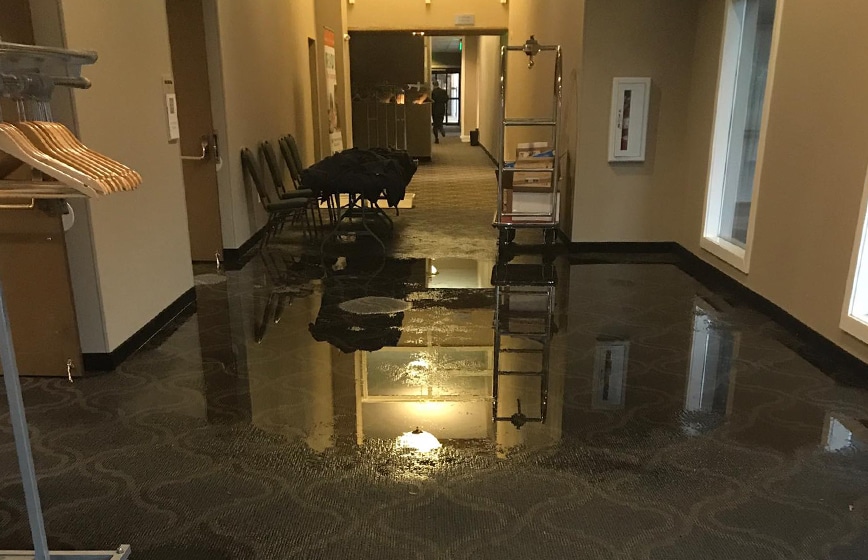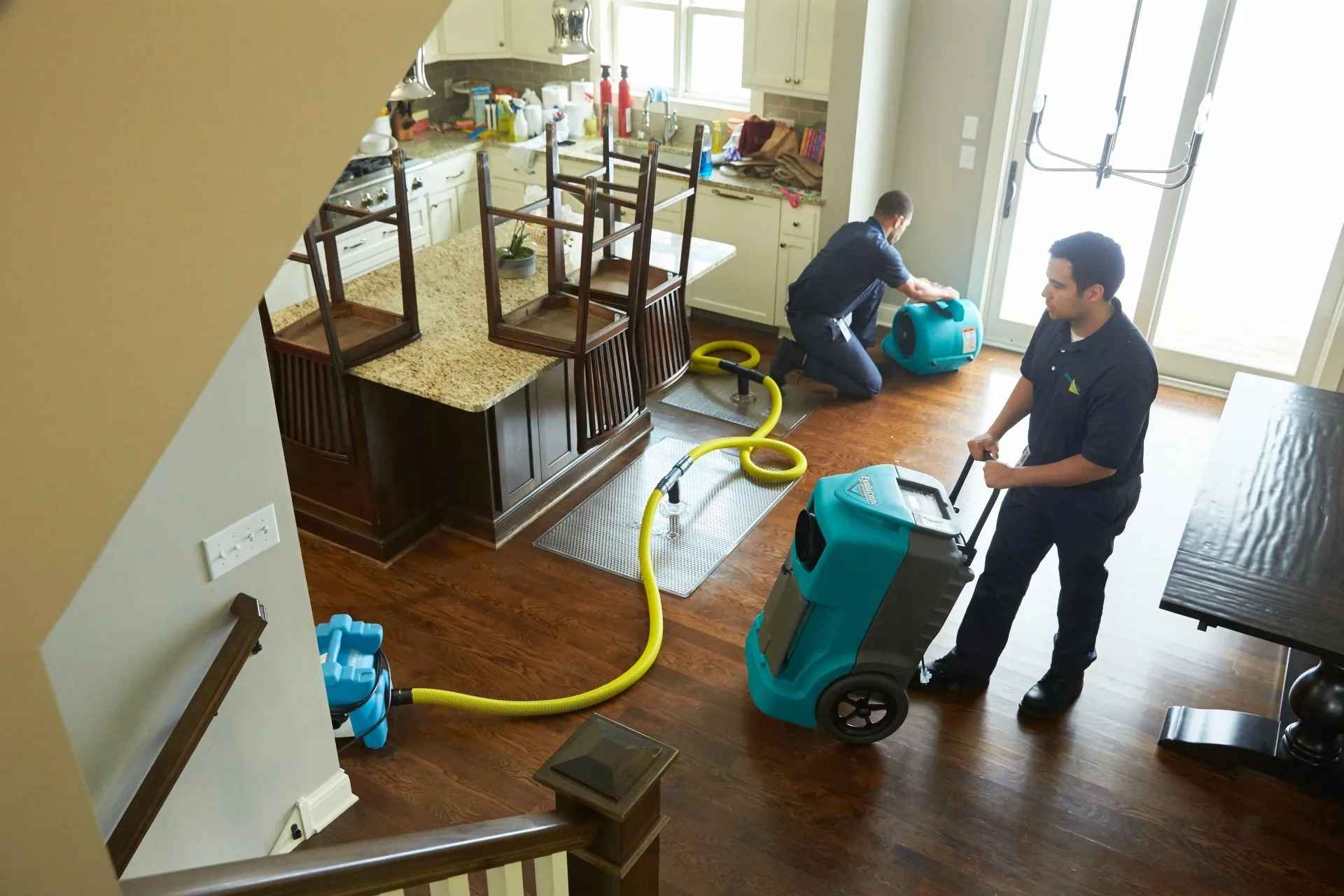Water Damage Restoration 101: Recognizing the Process and Price
Water damage can strike unexpectedly, leaving house owners in a state of complication. Recognizing the restoration process is important for effective healing. From assessing the damage to selecting the appropriate company, each step influences the total outcome and cost. Aspects such as the kind of water damage and necessity likewise play a substantial function. What are the certain strategies used in restoration, and how can one prepare for possible expenditures?
Kinds Of Water Damage
Water damage can develop from different sources, each providing unique challenges for repair. The 3 key sorts of water damage are classified based upon contamination degrees: tidy water, grey water, and black water. Tidy water stems from resources like busted pipes or rainwater, positioning very little health threats. Gray water, which consists of wastewater from sinks or washing machines, contains contaminants that might cause pain or health problem if ingested. Black water, one of the most hazardous group, comes from sewer or floodwaters, having harmful bacteria and virus. Each kind requires particular reconstruction methods and precaution to efficiently reduce and resolve the damage health and wellness risks. Comprehending these distinctions is crucial for house owners and professionals included in the water damage restoration process.
First Assessment and Examination
A detailed initial evaluation and assessment are essential action in the water damage restoration process. This phase starts with a professional examining the degree of the damage, determining the source of the water invasion, and establishing the sort of water entailed - Flood Cleanup Services. Specialists use specialized devices to determine wetness degrees in numerous products, such as wall surfaces, floorings, and furnishings. Furthermore, they examine architectural stability and prospective health and wellness risks, including mold and mildew development. The searchings for from this assessment notify the remediation plan, assisting required activities and resource appropriation. Accurate paperwork of the damage is important for insurance policy cases and future reference. Overall, this preliminary assessment lays the groundwork for efficient reconstruction, making sure a detailed response to the details scenario handy

Water Extraction Strategies
Adhering to the preliminary analysis, effective water removal methods are employed to mitigate damage and prevent further concerns. These methods involve making use of specialized equipment such as completely submersible pumps and industrial-grade vacuums. The selection of approach depends on the volume of water present and the type of materials influenced. For standing water, completely submersible pumps are commonly used for rapid elimination, while vacuums are perfect for removing water from carpetings and upholstery. In addition, advanced approaches like water extraction floor coverings may be used for hard-to-reach locations. The goal is to eliminate as much water as feasible, reducing the possibility for mold growth and architectural damage. Prompt and efficient water extraction is essential in the total water damage remediation procedure.
Drying and Dehumidification Process
When the water removal is complete, the drying and dehumidification procedure becomes essential to bring back the affected location. This phase normally uses industrial-grade dehumidifiers and air movers to properly minimize moisture degrees. The dehumidifiers pull in damp air, getting rid of excess moisture, while air movers distribute air to increase dissipation. Tracking devices is frequently used to track moisture and temperature level degrees, guaranteeing ideal drying problems. The period of this procedure can differ depending on the level of the water damage and environmental aspects. It is important to extensively completely dry all affected products, including wall surfaces, floor covering, and furnishings, to stop mold and mildew development and architectural damage. Proper implementation of this action is critical for an effective reconstruction result.
Cleansing and Sterilizing Afflicted Locations

First Evaluation and Examination
Prior to starting any remediation initiatives, a thorough preliminary assessment and examination of the influenced locations are important for efficient cleansing and sterilizing. This process entails recognizing the degree of water damage, identifying the resource of the water intrusion, and evaluating the products affected. Examiners generally try to find signs of mold growth, architectural stability issues, and harmed possessions. The analysis additionally includes inspecting moisture degrees making use of specialized tools to ensure no surprise water pockets remain, as these can bring about further problems. Recording the findings is crucial for planning the following actions in the repair process. A comprehensive initial assessment makes it possible for repair professionals to design a targeted approach for effective cleansing and disinfecting, inevitably minimizing damage and health and wellness dangers.
Cleaning Up Strategies and Products
Efficient cleaning and sterilizing of water-damaged locations require a variety of products and techniques tailored to the details materials influenced. For porous surface areas like drywall and carpets, removal methods are vital to eliminate excess dampness, followed by deep cleaning with specialized detergents. Non-porous materials such as tile or steel can be cleansed utilizing commercial-grade cleaners that efficiently remove impurities. Vapor cleansing is one more effective technique, see here specifically for rugs and upholstery, as it uses heats to get rid of germs and mold. In addition, eco-friendly items are progressively preferred for their safety and security and effectiveness. Ultimately, picking the suitable cleaning methods and products not just assures prompt tidiness however also help in avoiding further damage and wellness risks linked with water invasion.
Sanitization and Disinfection Methods
When attending to water damage, proper sanitization and sanitation methods are necessary to assure the security and health and wellness of the afflicted environment. After first cleaning, surface areas must be treated with proper anti-bacterials to get rid of virus, mold, and germs that flourish in moist conditions. Usual methods consist of using EPA-approved chemical disinfectants, which can be applied via spraying or wiping methods. Additionally, ultraviolet (UV) light systems can successfully disinfect locations by reducing the effects of microbes without severe chemicals. The option of method typically relies on the kind of materials influenced and the degree of contamination. Inevitably, extensive sanitization not just recovers a secure space but likewise assists protect against future health risks connected with remaining moisture and mold growth.

Repair Work and Restoration Options

Elements Affecting Restoration Expenses
The extent of water damage straight impacts the repair sets you back property owners can anticipate to incur. Elements such as the source of the water, the period of exposure, and the affected products considerably influence rates. For example, clean water damage from a broken pipe is typically less costly to bring back contrasted to damage triggered by sewage. Furthermore, the level of contamination determines the requirement for specialized cleaning and disposal services, even more increasing expenses. Geographic place likewise plays a role, as local labor prices and availability of restoration solutions can differ. Finally, the urgency of the feedback influences prices; quicker interventions generally cause reduce overall costs by avoiding additional damage. Recognizing these variables is important for property owners when estimating remediation costs
The 3 primary kinds of water damage are classified based on contamination levels: clean water, gray water, and black water. A comprehensive first evaluation and inspection are vital steps in the water damage repair procedure. For standing water, completely submersible pumps are commonly used for fast elimination, while vacuum cleaners are optimal for extracting water from carpetings and furniture. The degree of water damage straight affects the remediation sets you back house owners can expect to sustain. Clean water damage from a busted pipe is generally much less costly to recover compared to damage created by sewage.